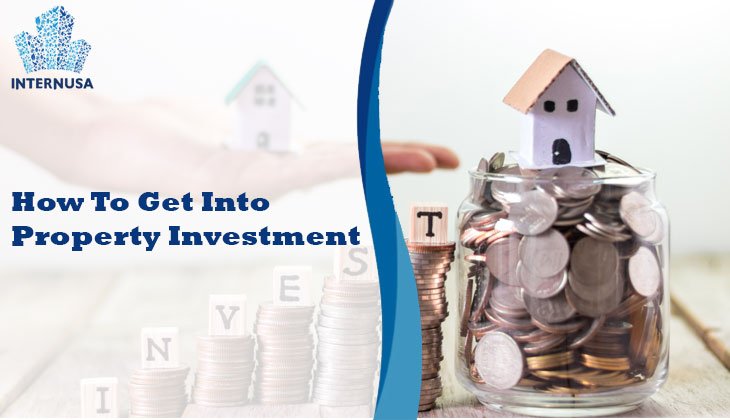How To Get Into Property Investment
Property investment is a lucrative avenue that offers the potential for significant financial returns and wealth accumulation. However, entering the world of property investment requires careful planning, strategic thinking, and a sound understanding of the market. If you’re considering diving into property investment, this guide will provide you with a comprehensive roadmap to help you get started.
1. Understanding Property Investment
Before embarking on your property investment journey, it’s crucial to understand what property investment entails. At its core, property investment involves purchasing real estate with the expectation of generating income or capital appreciation. This can be achieved through various strategies, including rental income, property flipping, and real estate development.
Types of Property Investment:
Residential Properties: Single-family homes, multi-family units, and apartments.
Commercial Properties: Office buildings, retail spaces, and warehouses.
Industrial Properties: Manufacturing plants and distribution centers.
Land: Vacant land or undeveloped properties with potential for future development.
2. Set Clear Investment Goals
Define your investment goals before you start. Are you looking for short-term gains, such as flipping properties for profit, or long-term gains, such as building a rental income portfolio? Your goals will dictate your investment strategy and help you make informed decisions.
Consider the Following Goals:
Cash Flow: Regular income from rental properties.
Capital Growth: Increase in property value over time.
Diversification: Spread risk by investing in different types of properties or locations.
Retirement Savings: Building a portfolio that provides financial security in retirement.
3. Research the Market
Conduct thorough research on the property market to identify lucrative investment opportunities. This involves analyzing property trends, understanding local markets, and evaluating economic factors that can impact property values.
Key Areas to Research:
Market Trends: Study historical data and current trends in property prices and rental yields.
Location: Identify high-demand areas with potential for growth. Consider factors such as proximity to amenities, transportation, and employment hubs.
Economic Indicators: Monitor economic factors such as employment rates, interest rates, and population growth.
4. Assess Your Financial Situation
Evaluate your financial situation to determine how much you can invest in property. This includes assessing your savings, income, and creditworthiness. Understanding your financial position will help you determine the type of property you can afford and the financing options available.
Key Financial Considerations:
Budget: Determine how much you can afford to invest, including down payments, closing costs, and ongoing expenses.
Financing Options: Explore mortgage options and investment loans. Consider factors such as interest rates, loan terms, and repayment schedules.
Emergency Fund: Maintain a financial buffer to cover unexpected expenses or periods of vacancy.
5. Develop a Strategy
Formulate a clear investment strategy that aligns with your goals and risk tolerance. Common property investment strategies include:
Investment Strategies:
Buy and Hold: Purchase properties with the intention of holding them long-term to benefit from rental income and capital appreciation.
Fix and Flip: Buy properties in need of renovation, improve them, and sell them for a profit.
Buy, Rent, and Refinance: Acquire a property, rent it out, and refinance it to access the equity for further investments.
Real Estate Investment Trusts (REITs): Invest in publicly traded REITs to gain exposure to property markets without directly owning properties.
6. Build a Team of Professionals
Assemble a team of professionals to support your property investment endeavors. This team may include:
Key Professionals:
Real Estate Agent: Provides market insights, identifies investment opportunities, and facilitates property transactions.
Mortgage Broker: Assists in securing financing and finding the best mortgage rates.
Property Manager: Manages rental properties, handles tenant relations, and oversees maintenance.
Real Estate Lawyer: Advises on legal matters related to property transactions and contracts.
Accountant: Provides financial advice, manages tax obligations, and helps with investment planning.
7. Conduct Due Diligence
Perform thorough due diligence before finalizing any property purchase. This involves inspecting the property, reviewing legal documents, and assessing potential risks.
Due Diligence Checklist:
Property Inspection: Hire a professional inspector to assess the property’s condition and identify any potential issues.
Legal Review: Ensure that the property has clear titles and no legal encumbrances.
Financial Analysis: Evaluate the property’s potential for rental income, expenses, and return on investment.
Market Comparisons: Compare the property with similar properties in the area to assess its value and potential for appreciation.
8. Make the Purchase
Once you’ve completed your due diligence and secured financing, proceed with the purchase. Work with your real estate agent and lawyer to finalize the transaction and ensure that all legal and financial aspects are in order.
Purchase Process:
Offer and Negotiation: Submit an offer and negotiate the terms with the seller.
Contract Signing: Sign the purchase agreement and complete any required paperwork.
Closing: Finalize the transaction, transfer funds, and obtain ownership of the property.
9. Manage Your Investment
Effective property management is crucial for maximizing your investment returns. Whether you’re managing rental properties or overseeing renovations, staying organized and proactive will help ensure the success of your investment.
Management Tips:
Tenant Screening: Thoroughly vet potential tenants to minimize the risk of problematic tenants.
Maintenance: Regularly maintain the property to preserve its value and attract high-quality tenants.
Financial Tracking: Keep accurate records of income, expenses, and financial performance.
Adapt to Market Changes: Stay informed about market trends and adjust your strategy as needed.
10. Evaluate and Adjust
Periodically review your investment performance and make adjustments to your strategy as needed. Evaluate the success of your investments based on your goals and make informed decisions to optimize your portfolio.
Evaluation and Adjustment:
Performance Review: Assess the financial performance of your properties and overall portfolio.
Goal Assessment: Revisit your investment goals and adjust them based on your current situation and market conditions.
Strategy Refinement: Modify your investment strategy to address any challenges or opportunities that arise.
Conclusion
Getting into property investment requires a combination of research, planning, and strategic execution. By understanding the fundamentals of property investment, setting clear goals, and working with a team of professionals, you can navigate the complexities of the real estate market and build a successful investment portfolio. Remember, property investment is a long-term endeavor that demands patience and persistence, but with careful planning and informed decision-making, it can lead to substantial financial rewards and long-term wealth.






